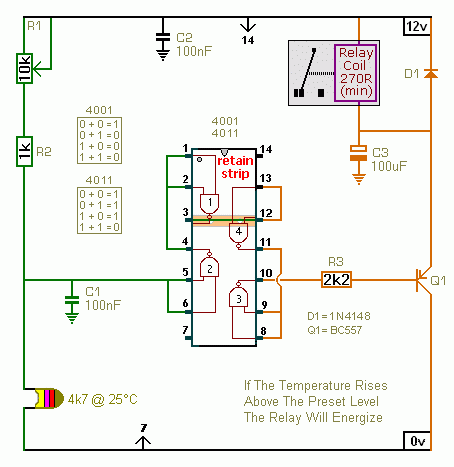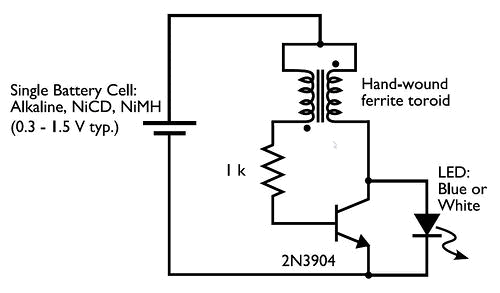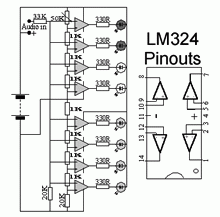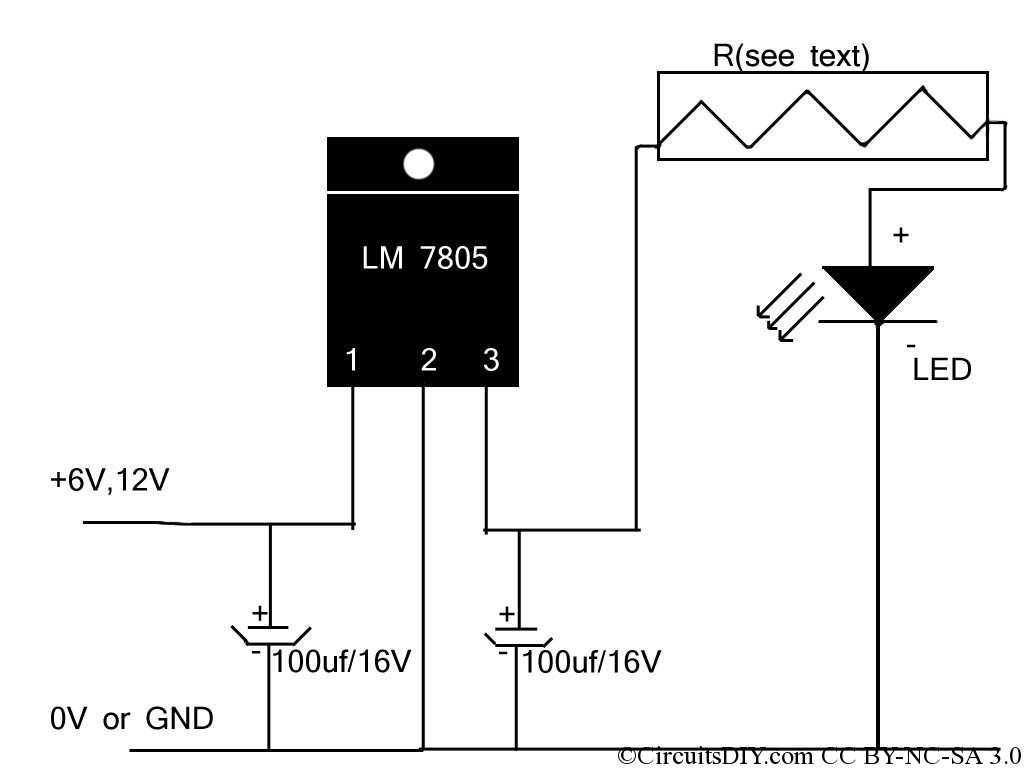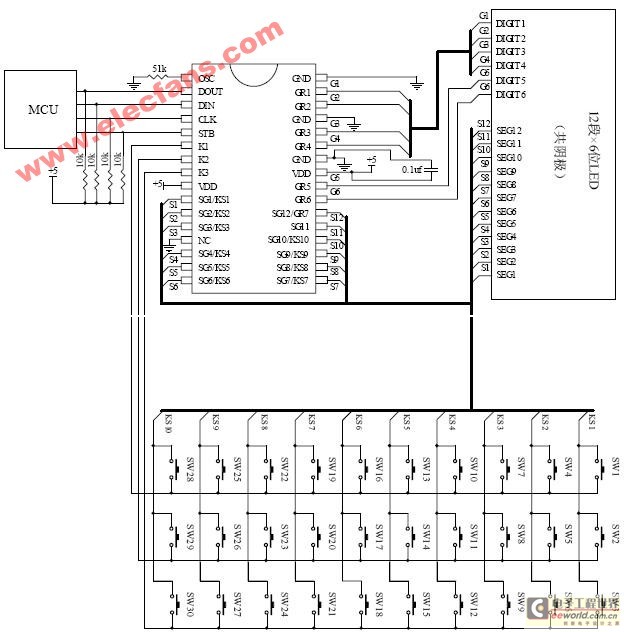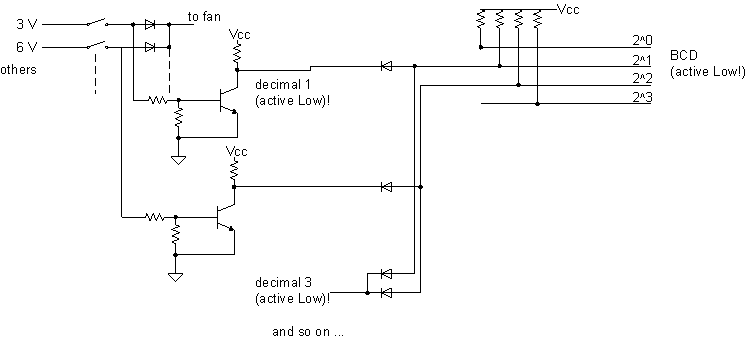
Mains Blinking LED
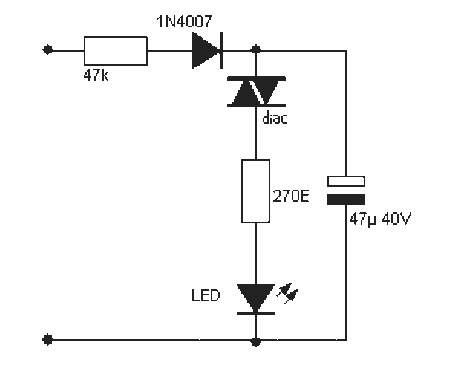
I needed a pulsating light for a certain signaling. Voltage was 230V. So I decided to make a simple circuit, consisted of a LED diode, two capacitors, two resistors, a diac and a diode. Activity of the circuit is extraordinarily simple. The capacitor charges by the diode and the resistor. When the voltage on the capacitor achieves 30V the diac "releases" the electrical tension and the capacitor empties thorough the diac, LED blinks. Time base is dependent from the capacitor and the resistor, which is in series with diode 1N4007. Capacitor must be at least for 40V.
The described circuit functions as a simple pulsating light generator, ideal for signaling applications. The primary components include an LED, two capacitors, two resistors, a DIAC, and a rectifying diode (1N4007). The circuit operates on an AC voltage supply of 230V, which is transformed into a pulsating DC signal suitable for the LED.
The operational principle begins with the charging of the capacitor through the series resistor and the rectifying diode. The diode 1N4007 is crucial as it allows current to flow in one direction only, thus preventing reverse polarity from affecting the capacitor. The capacitor is charged until the voltage across it reaches a threshold of 30V. At this point, the DIAC becomes conductive, allowing the stored charge in the capacitor to discharge rapidly. This rapid discharge causes the LED to blink.
The timing of the blinking is determined by the RC time constant, which is a function of the resistance and capacitance values used in the circuit. The two resistors can be configured to set the charge and discharge rates, thus controlling the blink rate of the LED. Additionally, the capacitors must be rated for at least 40V to ensure they can handle the peak voltage from the AC supply without failure.
This circuit is relatively simple to construct and can be used in various signaling applications where an intermittent light is required. Proper attention should be given to component ratings, especially concerning the voltage and power ratings, to ensure reliable operation.I needed a pulsating light for a certain signaling. Voltage was 230V. So I decided to make a simple circuit, consisted of a LED diode, two capacitors, two resistors, a diac and a diode. Activity of the circuit is extraordinarily simple. The capacitor charges by the diode and the resistor. When the voltage on the capacitor achieves 30V the diac "releases" the electrical tension and the capacitor empties thorough the diac, LED blinks.
Time base is dependent from the capacitor and the resistor, which is in series with diode 1N4007. Capacitor must be at least for 40V. 🔗 External reference
The described circuit functions as a simple pulsating light generator, ideal for signaling applications. The primary components include an LED, two capacitors, two resistors, a DIAC, and a rectifying diode (1N4007). The circuit operates on an AC voltage supply of 230V, which is transformed into a pulsating DC signal suitable for the LED.
The operational principle begins with the charging of the capacitor through the series resistor and the rectifying diode. The diode 1N4007 is crucial as it allows current to flow in one direction only, thus preventing reverse polarity from affecting the capacitor. The capacitor is charged until the voltage across it reaches a threshold of 30V. At this point, the DIAC becomes conductive, allowing the stored charge in the capacitor to discharge rapidly. This rapid discharge causes the LED to blink.
The timing of the blinking is determined by the RC time constant, which is a function of the resistance and capacitance values used in the circuit. The two resistors can be configured to set the charge and discharge rates, thus controlling the blink rate of the LED. Additionally, the capacitors must be rated for at least 40V to ensure they can handle the peak voltage from the AC supply without failure.
This circuit is relatively simple to construct and can be used in various signaling applications where an intermittent light is required. Proper attention should be given to component ratings, especially concerning the voltage and power ratings, to ensure reliable operation.I needed a pulsating light for a certain signaling. Voltage was 230V. So I decided to make a simple circuit, consisted of a LED diode, two capacitors, two resistors, a diac and a diode. Activity of the circuit is extraordinarily simple. The capacitor charges by the diode and the resistor. When the voltage on the capacitor achieves 30V the diac "releases" the electrical tension and the capacitor empties thorough the diac, LED blinks.
Time base is dependent from the capacitor and the resistor, which is in series with diode 1N4007. Capacitor must be at least for 40V. 🔗 External reference
